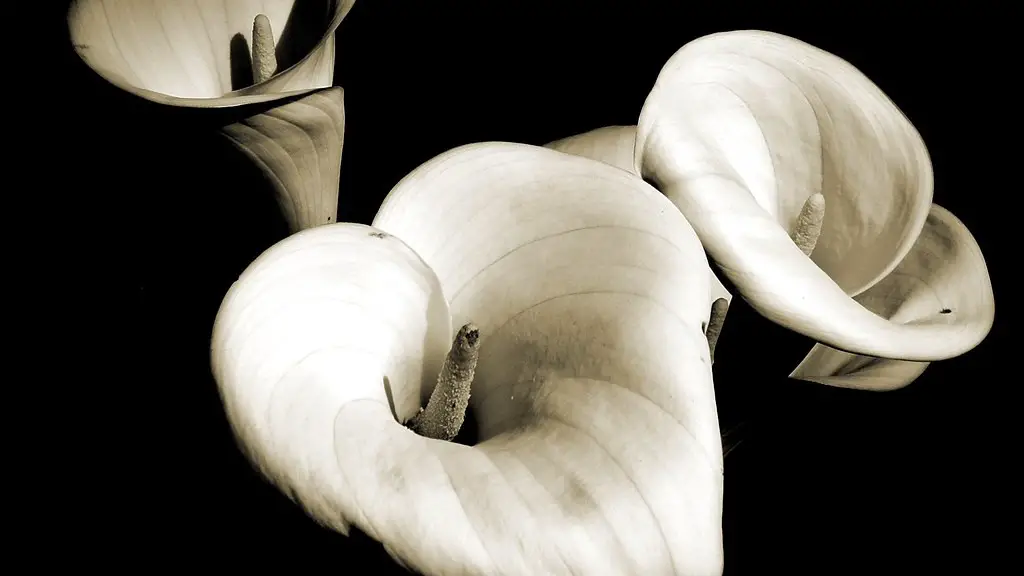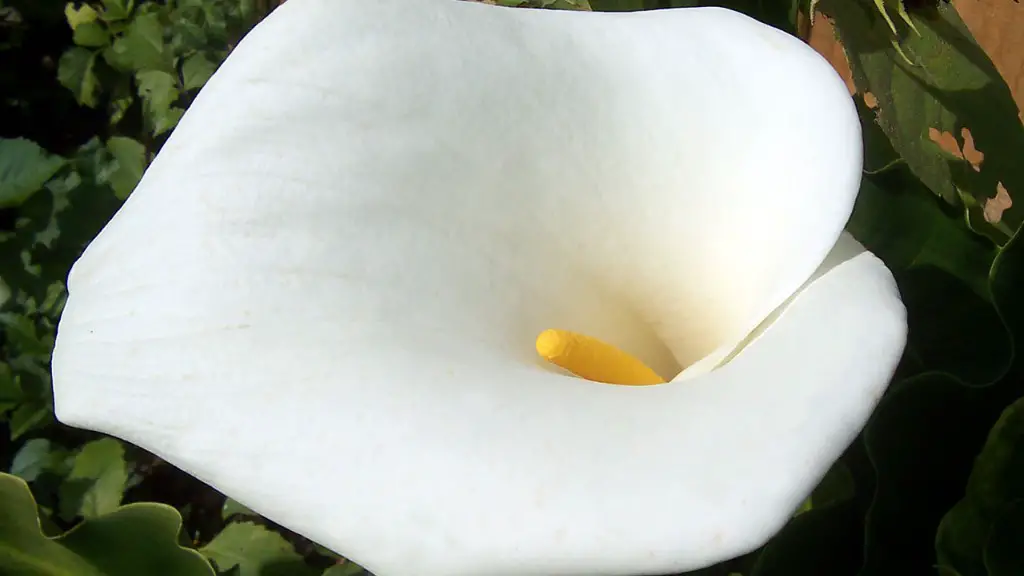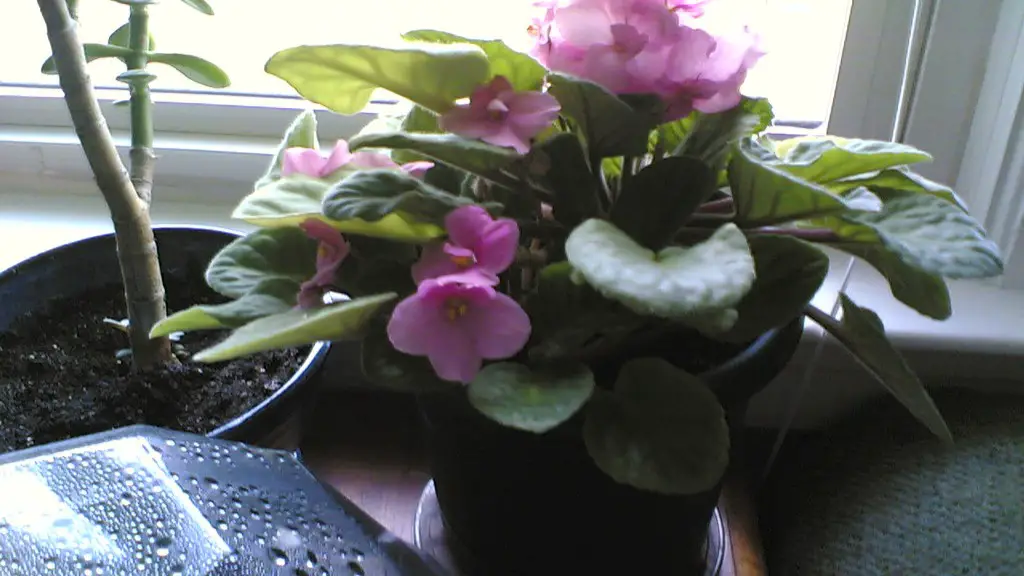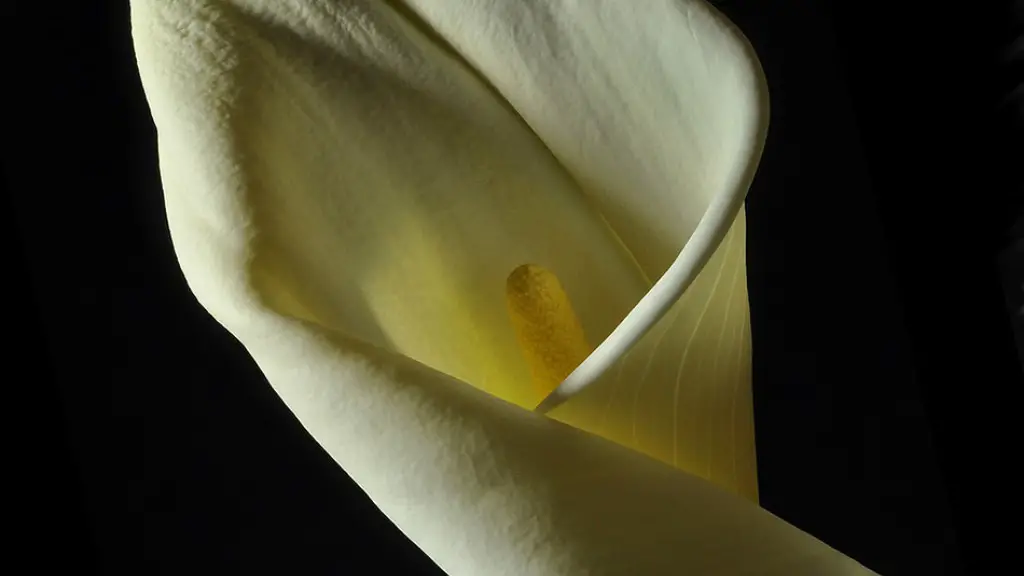If you have a calla lily that is wilting, there are a few things you can do to try to revive it. First, check the roots to see if they are still alive. If the roots are brown and mushy, the plant is probably not salvageable. If the roots are white and firm, the plant may be able to be saved. Second, trim off any brown or yellow leaves. Once you have trimmed the leaves, you can try to re-plant the calla lily in fresh potting soil. If the roots are still alive, the plant should start to recover.
First, assess the plant to see if it is truly dying. Check for signs of life, such as new growth, blooms, or buds. If the plant is truly dying, then it is important to determine the cause. Once the cause is determined, you can take steps to save the plant. Depending on the problem, you may need to provide the plant with more water, sunlight, or nutrients. You may also need to remove any pests or diseases. With the proper care, you can save a dying calla lily.
How do you bring calla lilies back to life?
If you want to force your calla lily to bloom, you can do so by following the directions above. By placing it in a cool, dark place for two months, you will trick the plant into thinking it is winter. This will cause the foliage to die back. However, after you bring it back out into the light and resume watering it, the foliage will regrow and your calla lily will start to bloom shortly thereafter.
If you live in a colder climate, you can still enjoy calla lilies by planting them as annuals. They are easy to grow and make a beautiful addition to any garden.
What do calla lilies look like when they are dying
Calla lilies are unique in that they don’t drop their petals like many other plants when their flowers are done blooming. Instead, the flower begins to die and rolls up into a tube, often turning green on the outside. These spent blossoms on calla lily plants are done, have no purpose and should be clipped off.
If the leaf tips of your calla lily are turning brown, you may be watering too much or applying too much fertilizer. Brown leaf tips may be a sign that you are giving the plant too much water or fertilizer. Try decreasing the amount of water or fertilizer you are giving the plant and see if the brown leaf tips go away.
Do calla lilies like sun or shade?
Calla lilies are beautiful flowers that can thrive in both full sun and partial shade. In cooler climates, they do best in full sun, but in warmer areas they can handle some shade. Calla lilies are winter hardy in zones 8-10, so in colder areas they can either be grown as annuals or dug up and stored indoors for replanting the next spring.
Hand-tied calla lily bouquets can last 12 to 24 hours out of water, even with sealed ends. Be sure to keep them in a cool, dry place away from direct sunlight. Enjoy your beautiful bouquet!
What’s the lifespan of a calla lily?
Calla lilies are beautiful flowers that make great houseplants. They can also be grown indoors and make excellent cut flowers. Calla lilies have one of the longest vase lives among cut flowers, up to 2 weeks. They are perfect for wedding bouquets and fresh floral arrangements.
If you find your calla lilies sitting in puddles or with mushrooms growing beside them, it’s likely that the soil is compacted and draining poorly. This can cause limp stems and root rotting. Causative factors include excessive rainfall, poor drainage, and overwatering. To fix the problem, you can improve drainage by aerating the soil and adding organic matter.
Why is my calla lily not doing well
Soft rot is a bacterial disease that affects the rhizomes of calla lilies and infects the plant through injuries. All four rots are prevalent in warm, moist conditions. Calla lilies are also susceptible to powdery mildew, Armillaria rot, gray mold, blight and leaf spots.
It’s important not to water your calla lilies too heavily, especially after you’ve first planted them. Once the rhizomes are established, you can water the plants once a week, or more often if you’re experiencing hot or drought-like conditions.
Are calla lilies hard to keep alive?
Calla lilies are mostly low maintenance. They prefer bright, indirect light, but they can also tolerate some shade. They also prefer to be kept moist but be careful not to overwater. In the growing season, they can benefit from balanced fertilizer every couple of weeks.
If you suspect that your calla lily has root rot, it’s important to take action quickly. If the rot isn’t extensive, the plant may be saved by repotting it in a quality growing medium and improving drainage. Reducing watering will also help to avoid root rot in the future. Keep track of how often you water your plant and only water when it’s absolutely necessary.
How can you tell if a calla lily is overwatered
If you have a calla lily plant, it’s important to avoid letting the roots sit in puddles of water. Too much moisture can cause the roots to rot, as well as contracting other diseases. This will also cause the plant’s leaves to wither. Instead, water the plant regularly and allow the soil to dry out in between watering. This will help keep your calla lily plant healthy and strong.
If you notice that your plants are still brown and withered after a week or two of watering them with distilled water, it’s time to move onto plan B. Another reason for brown leaves is often due to minerals like fluoride, salts, and chlorine found in tap water. Replacing your normal watering routine with distilled water should help to clear up the issue.
What does an overwatered lily look like?
If you notice that your Peace Lily has yellowing foliage, brown leaf tips, or is drooping, it is likely overwatered. Other signs of overwatering include leaf spot diseases and brown, mushy roots. The best way to avoid overwatering is to make sure your pot has good drainage and to water on a schedule.
If you’re looking for a plant that will add a splash of color to your garden without taking over, calla lilies are a great option. Another benefit of growing them in pots is that they can’t become invasive, unlike in garden beds where they may naturalize. So if you’re worried about your calla lilies getting out of control, growing them in pots is the way to go.
Are calla lilies better indoor or outdoor
The calla lily is a beautiful plant that can be enjoyed both inside and outside the home. Native to southern Africa, calla lilies are usually found near stream banks or other moist areas. These plants are quite hardy and easy to care for, making them a great choice for both indoor and outdoor gardens.
If you’re growing Calla Lilies, it’s important to keep the soil moist at all times. However, you don’t want the soil to be too wet or soggy. Calla Lilies are not resistant to drought, so it’s important to never let the soil completely dry out.
Conclusion
If your calla lily is wilting, you can try to save it by giving it a fresh cut and putting it in a vase with warm water.
If you find your calla lily wilting, there are a few things you can do to revive it. First, check the soil to see if it needs more water. If the soil is dry, water the plant and make sure the water drains out of the pot. Second, check the temperature of the room the plant is in and make sure it is not too hot or cold. Third, check for pests and remove any you find. If you follow these steps, your calla lily should start to look healthier.





